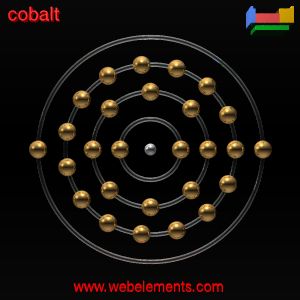

If added in small amounts, it only has little impact. In tungsten-containing tool steel, addition of cobalt also promotes martensite formation.Ĭobalt is generally not added to cast iron. Since cobalt increases the melt temperature and therefore allows for utilization of higher solution heat treatment temperatures, a large proportion of carbides is dissolved during annealing and diffused during tempering. These kinds of steels are used for production of tools for machining of hard materials. Two frequently used types of tungsten-containing high-speed steels contain between 5 and 10 %, sometimes even 15 % Co. Stabilization prevents decarburization during hot forming and eliminates problems during machining of steel with more than 5 % Co.Ĭobalt is an important constituent in tungsten-containing tool steel since it imparts the required hot hardness to those kinds of steels and thus increases their cutting performance at high temperatures. Cobalt-containing steel is often stabilized by addition of chromium, which forms complex carbides. Carbide, Carbide former) and is predomiantly present in steel in the form of non-resistant carbide Co 3C. It imparts corrosion and wear resistance to steel and leads to increase of tensile strength and yield strength but reduces toughness.Ĭobalt displays a tendency towards carbide formation, similar to iron (s. For this reason, steels with poor hardness penetration capacities contain up to 1 % Co.Ĭobalt hardens ferrite and significantly adds to its hot hardness. Hardness penetration capacity) during quenching. In contrast to most other alloying elements, cobalt reduces the hardness penetration depth (s.a. Cobalt increases the resistance of austenite in high-alloy steels during quenching from high temperatures. γ iron and cobalt are soluble within each other under any conditions and in any ratios solubility of cobalt in α iron is up to 75 %.Īddition of cobalt increases the solidus temperature of steel, lowers the A point and extends the region of the γ phase. The other, the cubic face-centered type, exists above this temperature. Cobalt is the main component for special cobalt alloys, that are partly used for investment casting products.Ĭobalt is available in two modification variants, one of which is the hexagonal close sphere packing and is resistant below 450 ☌. Because the melting point of cobalt is so high and has little to no reaction to oxygen, it is considered to be very stable at even very high temperatures.

Moreover, cobalt is an alloying element in martensite hardenable die steels, heating conductor materials and creep-resistant high-temperature materials. Materials for permanent magnets, high-speed steels and hot-work steels are alloyed using cobalt. It makes a strong alloy with other metals, has a high melting point and low conductivity. coefficient for linear expansion Coefficient for linear expansion As a pure metal, cobalt is hard and brittle. The specific type of cobalt alloy used to create cobalt rings is call cobalt chrome (CoCr).High-melting, steel gray lustre heavy metal that provides similar properties as nickel in many aspects. The melting point of cobalt metal is 1,493☌ (2,719☏), and the boiling point is about 3,100☌ (5,600☏). It is also one of the only three naturally magnetic metal found on Earth, among iron and nickel. One of the variations of cobalt, called Cobalt-60 isotope, is used widely in treating cancer and killing cancer cells.Ĭobalt is very hard, very ductile and moderately malleable. Cobalt is also used in making of lithium batteries and chemical catalysts. The use of cobalt in coloring can be traced back to ancient Egypt and China civilizations. Other applications of cobalt include pigmenting glass and ceramic with green and blue color and manufacturing paint. High speed steel drill bits are also made from cobalt alloys due to their superior heat-resistance. Another reason that cobalt alloys are suitable for prosthetics part is being hypoallergenic as well. The corrosion and wear-resistant characteristics make cobalt based superalloys widely used in medical industries for replacing body parts such as knee and joint bones. The strength and stability of cobalt alloys make them the perfect material for building turbine blades and jet engines for aircrafts. Superalloys made from cobalt consume most of the cobalt mined worldwide. It can also be found in meteoric iron and vitamin B-12. Mostly yielded from Democratic Republic of the Congo, cobalt ore is mainly a by-product of copper and nickel mining. The word cobalt is taken from German word Kobold, which means “goblin”, a name used by miner to refer to cobalt ore. Cobalt, with chemical symbol Co and atomic number 27, is a lustrous grey metal and not found in its pure form in nature.


 0 kommentar(er)
0 kommentar(er)
